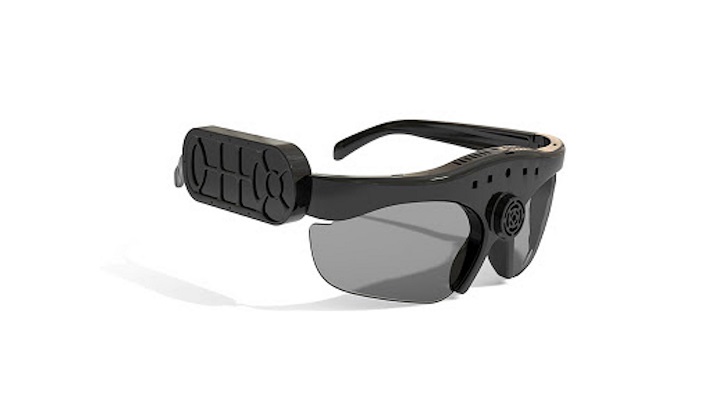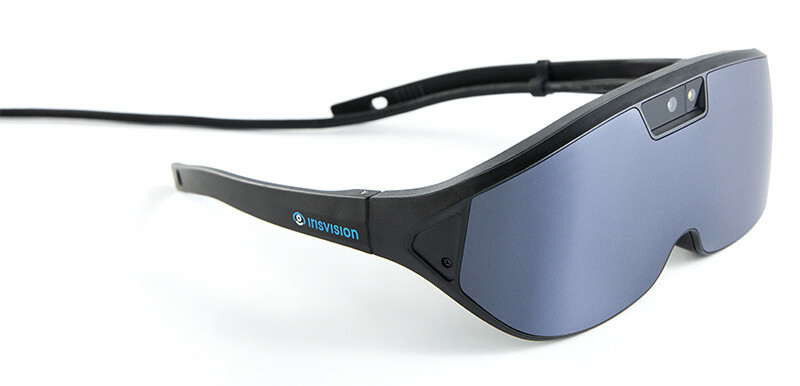Cutting-edge Solutions in Assistive Technology for Visual Disability
The landscape of assistive technology for aesthetic impairment is evolving swiftly, providing a variety of innovative options that enhance ease of access and freedom. From advanced smartphone applications that facilitate navigating to wearable gadgets designed for real-time advice, these devices are improving the experiences of those with aesthetic problems. The assimilation of clever home technologies and academic sources has the possible to foster better area involvement. Nevertheless, the implications of these developments raise essential questions concerning their ease of access and performance in diverse contexts, requiring a more detailed assessment of their more comprehensive impact.
Innovations in Smart Device Applications
Recently, developments in mobile phone applications have substantially changed the landscape of assistive modern technology for individuals with visual problems. These applications take advantage of the effective sensors and capacities of contemporary smartphones to give individuals with devices that boost self-reliance and availability in their everyday lives.
Remarkable among these advancements are applications created for item recognition, which make use of the smart device's electronic camera to recognize products and supply spoken summaries. Such attributes equip users to navigate their settings extra properly, whether determining products in shops or situating individual possessions at home. Additionally, text-to-speech applications have boosted drastically, allowing users to capture published text via their tool's cam and receive instant audio feedback, thus assisting in reading and comprehension.
Community-driven applications have cultivated social communication and resource sharing among individuals with visual disabilities, producing a helpful network that improves their high quality of life. Overall, smart device applications have actually come to be indispensable allies in advertising freedom and availability for individuals with aesthetic impairments.
Wearable Tools for Navigation
Wearable devices for navigating have actually become a groundbreaking option for people with visual disabilities, providing hands-free support that boosts wheelchair and alignment. These gadgets commonly utilize advanced innovations, including GPS, ultrasonic sensors, and fabricated knowledge, to supply real-time responses and instructions to users as they browse their atmosphere.
One noteworthy instance of wearable navigation modern technology is smart glasses, which can identify challenges and relay auditory or haptic responses to the user, enabling effective and secure activity in various settings. Other gadgets, such as belts and vests furnished with sensing units, can likewise educate customers of their surroundings by providing informs concerning neighboring objects or changes in terrain.
Furthermore, several wearable gadgets integrate with mobile phone applications, allowing customers to customize their navigating choices and obtain customized route recommendations. This customization can significantly improve the individual experience, equipping people to travel with higher confidence and freedom.
As innovation continues to develop, the possibility for wearable navigation devices to boost the high quality of life for people with aesthetic problems remains considerable, leading the way for more available and inclusive atmospheres.
Smart Home Modern Technology Assimilation

Furthermore, smart appliances geared up with responsive user interfaces or acoustic comments give user-friendly communications that provide especially to the requirements of those with visual disabilities. As an example, smart fridges can announce their materials and expiration dates, while wise ovens can assist customers through the cooking process navigate to these guys with audio instructions.
Home automation systems, such Read Full Article as clever doorbells and protection cameras, supply comfort by enabling users to get notifies and access live feeds through their mobile devices, boosting individual safety (AI-powered visual aids). Additionally, integration with smartphones and tablets makes certain that customers can manage their home environment from anywhere within their facilities
As smart home technology continues to advance, it holds the potential to transform the living experiences of individuals with aesthetic disabilities, fostering freedom and enhancing quality of life in an increasingly connected globe.

Educational Devices and Resources
Access to reliable educational devices and resources is important for people with visual impairments, as it empowers them to engage fully in their discovering experiences. Different assistive modern technologies have actually been established to improve access and foster independent learning.
In addition, academic software program specifically designed for aesthetically damaged individuals provides features such as high-contrast settings and adjustable text dimensions. These tools fit varied discovering styles and ensure that trainees can tailor their academic experience to their requirements.
In addition, access to audio publications and electronic collections broadens the array of available learning products, making it possible for students to check out subjects detailed without the constraints enforced by standard print resources. Collective systems that incorporate access functions likewise assist in group projects, ensuring that aesthetically impaired trainees can contribute meaningfully together with their peers.
Neighborhood Support and Involvement
A durable network of community support and involvement is necessary for people with visual impairments, cultivating an inclusive environment where they can thrive. Area organizations, regional campaigning for teams, and volunteers play a pivotal duty in offering sources, details, and friendship, which are important for improving the quality of life for view it those impacted by visual impairments.
Interaction activities such as workshops, get-togethers, and support teams not only help with skill advancement but likewise promote social interaction, decreasing sensations of isolation. These campaigns motivate people to share experiences, difficulties, and successes, thus enhancing area bonds. Additionally, partnerships with local businesses can result in better availability in public areas, even more incorporating individuals with visual impairments right into the neighborhood.
Technology likewise improves community engagement with online platforms that offer digital support system and resources, enabling individuals to connect despite geographical obstacles. By taking advantage of both in-person and electronic services, communities can create a thorough assistance network. Inevitably, cultivating collaboration among various stakeholders-- consisting of family members, educators, and healthcare experts-- makes sure that individuals with visual impairments get the holistic support needed to navigate daily life successfully and with dignity.
Conclusion
Innovative remedies in assistive modern technology for visual impairment significantly improve the high quality of life for individuals dealing with these difficulties. The integration of mobile phone applications, wearable devices, wise home modern technology, and educational tools cultivates better independence and availability.
The landscape of assistive modern technology for visual disability is progressing quickly, providing an array of cutting-edge remedies that boost access and freedom. Community-driven applications have actually cultivated social communication and resource sharing among people with aesthetic disabilities, creating an encouraging network that improves their high quality of life. In general, mobile phone applications have ended up being essential allies in advertising freedom and access for people with aesthetic impairments.
Several individuals with aesthetic impairments are locating greater autonomy via the combination of clever home technology.Innovative remedies in assistive technology for aesthetic impairment dramatically boost the top quality of life for individuals dealing with these obstacles.